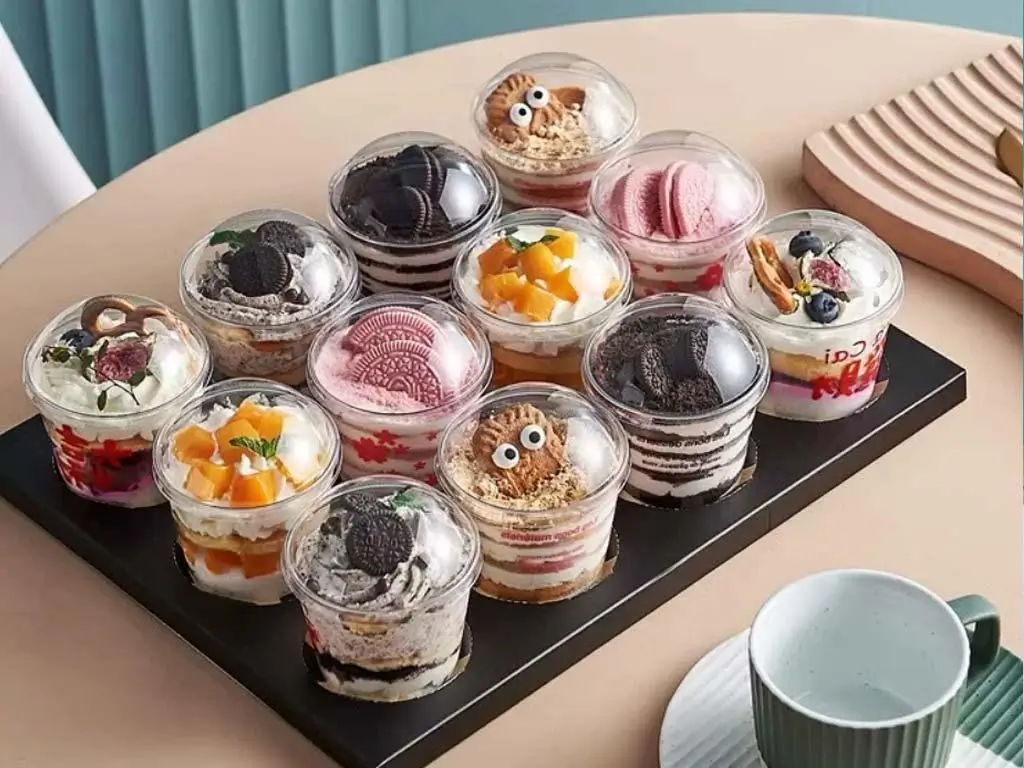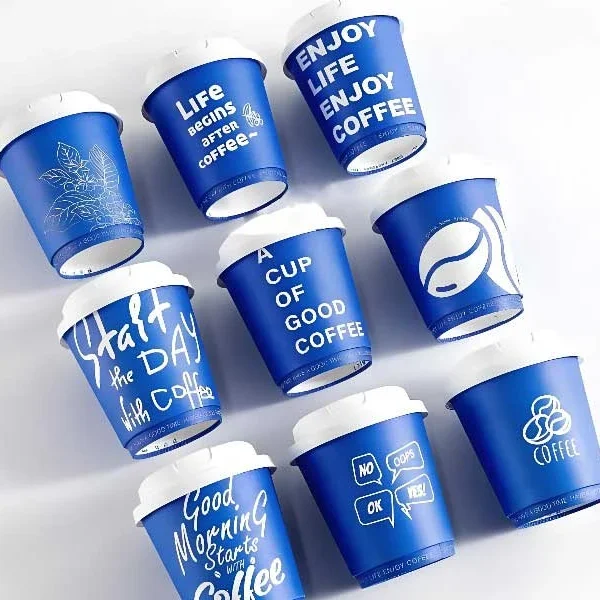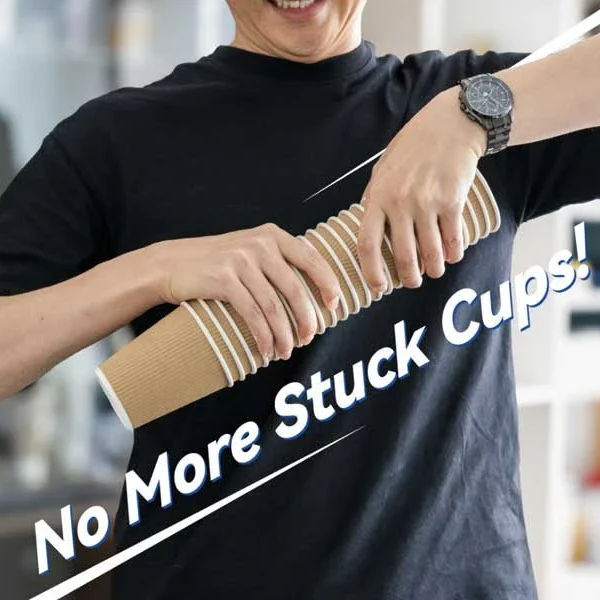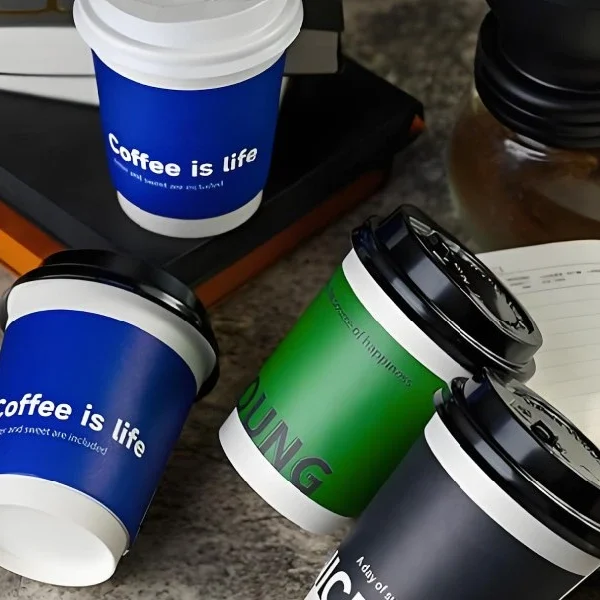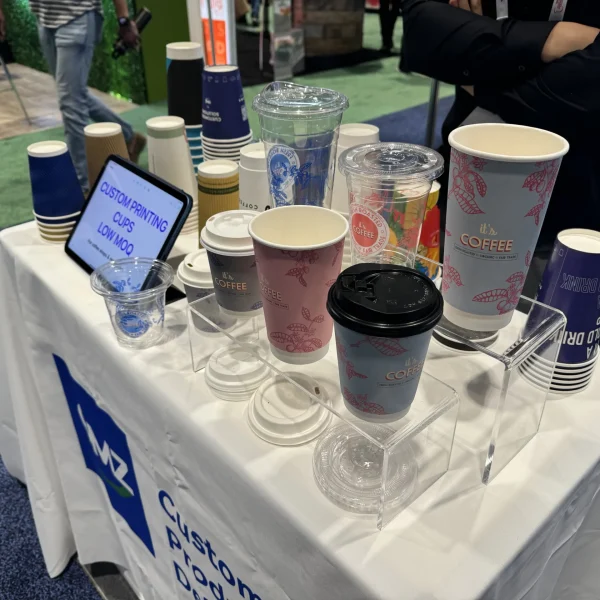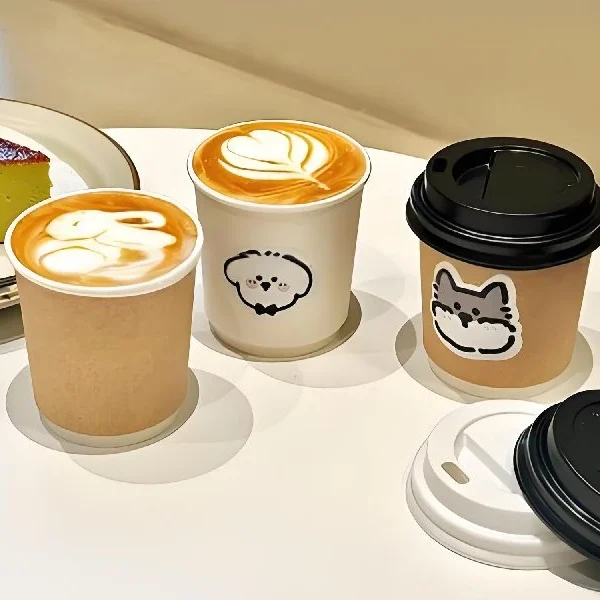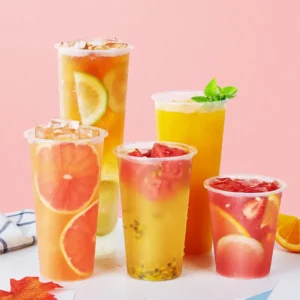Yogurt parfait cups are a popular packaging choice in cafés, dessert shops, and takeaway services. For food industry professionals, retailers, and bulk buyers, selecting the right cup affects not only food safety and freshness but also brand image, customer experience, and operational costs. However, with so many options available – ranging from plastic and paper to biodegradable materials, with or without lids – it can be challenging to find the perfect fit for your needs.
As a professional supplier specializing in customized and wholesale food packaging, GMZ Ltd. has nearly 20 years of industry experience. In this guide, we’ll share insights based on our expertise, analyzing different materials, lid designs, reusability, and transparency levels to help restaurants, food retailers, and wholesalers select the best yogurt parfait cups. The right choice can enhance product presentation and improve user experience.
Comparing Different Yogurt Parfait Cup Materials
When selecting yogurt parfait cups, the material is a key factor to consider. It affects not only the appearance and feel of the cup but also its freshness retention, environmental impact, and brand image. Different materials work best for different business needs and use cases.
1. Plastic Parfait Cups
Plastic cups are one of the most popular choices for yogurt parfaits, especially in takeout services, restaurants, and convenience stores. Most plastic yogurt cups are made from PET (Polyethylene Terephthalate), a material known for its crystal-clear transparency, which beautifully showcases the layers of yogurt, granola, and fruit. PET cups are also durable and shatter-resistant, making them easy to carry and use, especially for businesses that offer ready-to-eat or takeaway options.
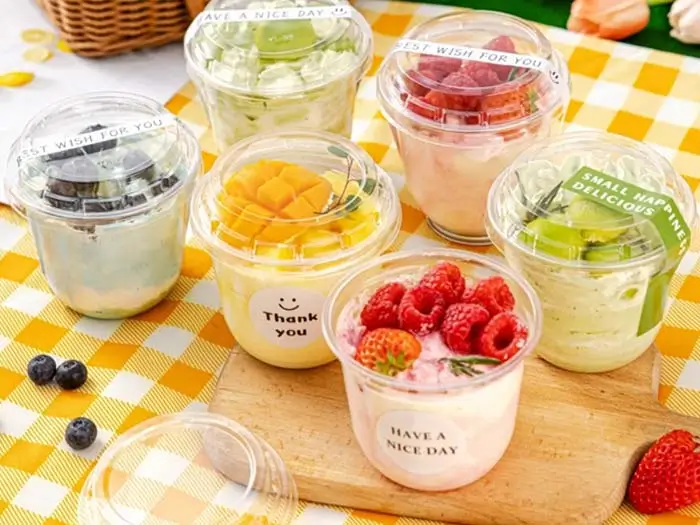
Plastic yogurt parfait cups
However, plastic cups are not always the most eco-friendly choice. In areas with limited recycling facilities, many plastic cups end up as non-biodegradable waste, contributing to environmental concerns.
2. Paper Parfait Cups
Compared to plastic, paper cups are a more environmentally friendly option. These cups are made from food-grade paper and feature a moisture-resistant coating to prevent leaks. One of the biggest advantages of paper cups is their branding potential. Their surface allows for easy printing of logos and custom designs, making them a great marketing tool.
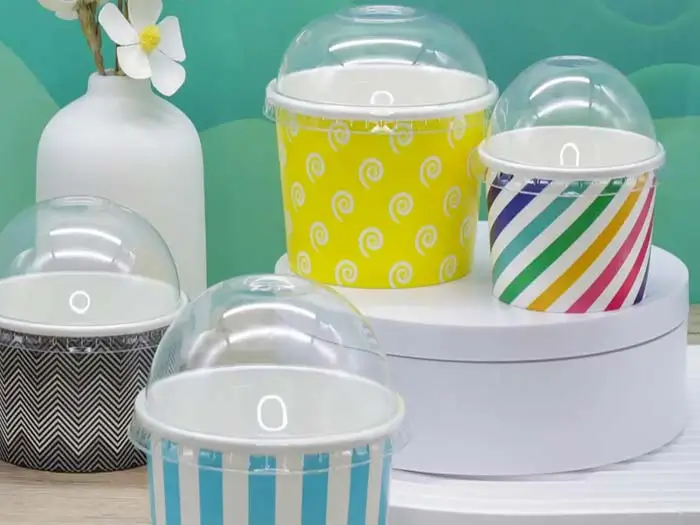
Paper Cups with Clear Libs
However, there are a few downsides. Paper cups lack transparency, so customers can’t see the parfait’s layers. They also have lower water resistance compared to plastic cups, which means that long-term storage of yogurt or other liquids may cause slight softening. Because of this, paper cups are better suited for brands focused on sustainability and image rather than businesses that rely on visual presentation.
3. PLA (Biodegradable) Cups
PLA (Polylactic Acid) cups are made from plant-based starch and can fully decompose under industrial composting conditions, making them a sustainable alternative to traditional plastic. These cups are ideal for businesses that prioritize eco-friendly packaging, such as organic restaurants and premium health food brands.
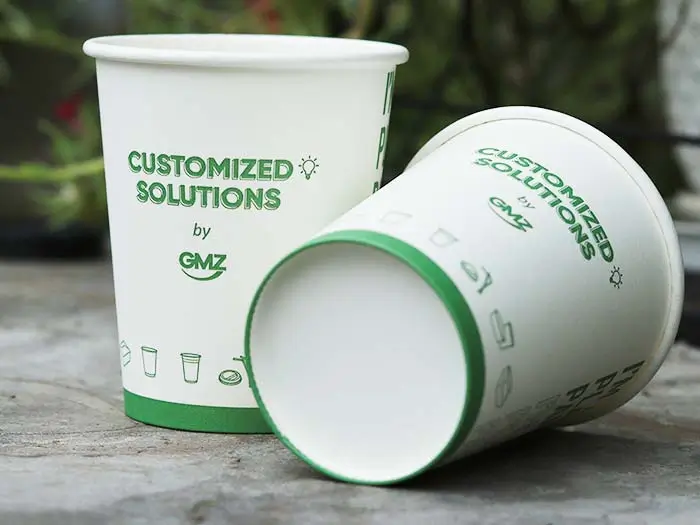
PLA Cups
However, PLA cups cost more than regular plastic cups, and they have low heat resistance, meaning they may deform when exposed to high temperatures. Because of this, they are best used for cold or room-temperature yogurt parfaits, but they are not suitable for hot drinks or high-temperature sterilization.
Should You Choose Yogurt Parfait Cups with Lids?
When choosing yogurt parfait cups, you may consider whether or not to add lids. Below, let’s discuss in detail the usage scenarios for lids and no lids.
1. Yogurt Parfait Cups with Lids
For takeout services, pre-packaged foods, and retail sales, cups with lids are the go-to choice. The cup lid can help prevent leaks, maintain freshness, and make transportation safer, making it an essential feature for businesses that offer grab-and-go or long-term storage options. Lidded parfait cups are not just for delivery and takeout. They are also widely used in supermarkets, convenience stores, and food retail businesses, where yogurt parfaits are sold as ready-to-eat products.
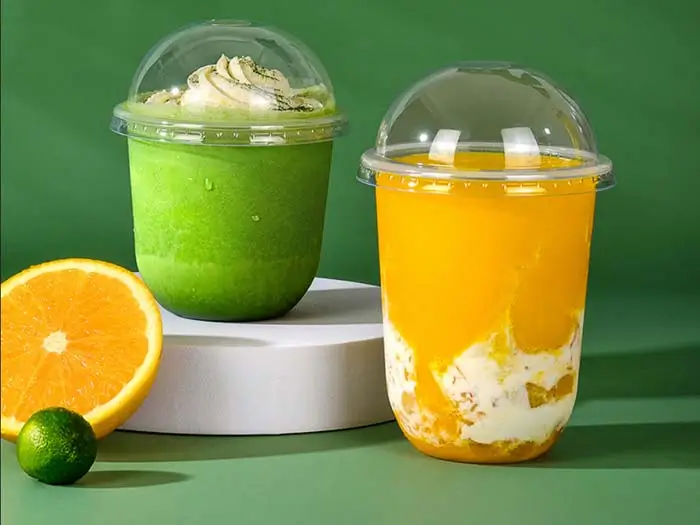
GMZ cups with libs
In fast-paced urban environments, consumers prefer packaging that is portable, hygienic, and easy to store, making lidded cups a more market-friendly choice. However, the added lid increases packaging costs, as it requires additional materials.
2. Open Yogurt Parfait Cups
For cafés, dessert shops, and buffets, open cups (without lids) are often the better choice. Since customers can immediately enjoy their food without opening a lid, these cups work well in dine-in and quick-serve settings.
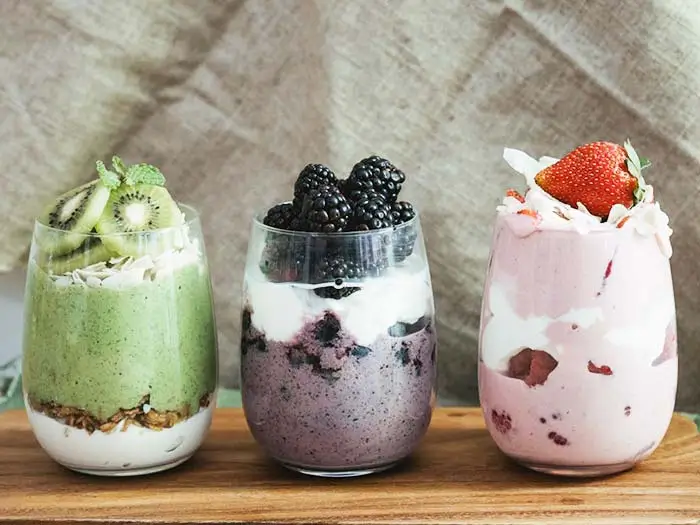
Glass Yogurt Parfait Cups without Lids
Open cups also offer better visual appeal, making them ideal for displaying layered parfaits in dessert shops. When customers can see the vibrant layers of yogurt, fruit, and granola, it enhances the overall presentation and increases impulse purchases. Additionally, in buffets and fast-paced dining environments, open cups help speed up service while reducing unnecessary packaging waste.
However, since open cups expose food to dust, contamination, and spills, they are not suitable for takeout or long-term storage.
Should You Use Disposable Yogurt Parfait Cups?
When choosing yogurt parfait cups, it’s important to consider not just the material and lid design, but also whether you need disposable or reusable options. Each type has its own advantages depending on your business model and customer needs.
1. Disposable Yogurt Parfait Cups
Disposable yogurt parfait cups are widely used in takeout services, convenience stores, parties, and large events. Their biggest advantage is convenience – they don’t require washing, which helps businesses speed up service and reduce labor costs.
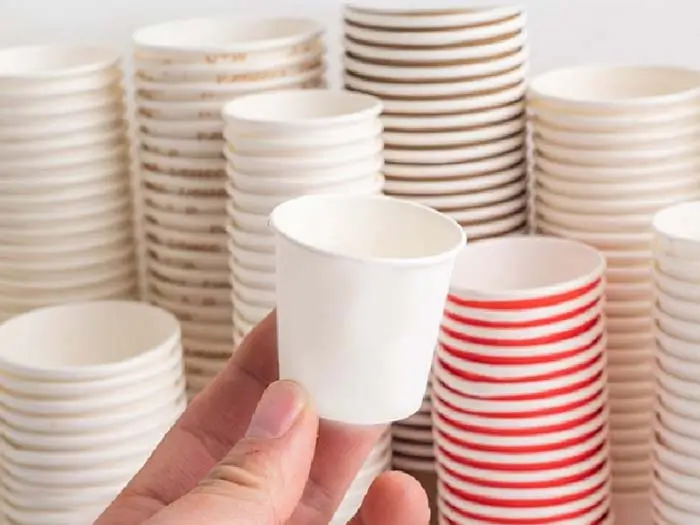
Disposable paper cup for yogurt sampling
However, disposable cups raise environmental concerns, especially with plastic waste. For businesses focused on sustainability, choosing biodegradable or recyclable materials is a more responsible option.
2. Reusable Parfait Cups
Reusable yogurt parfait cups offer better sustainability and cost efficiency in the long run. They are typically made from PC (polycarbonate), Tritan, or glass, which are durable, shatter-resistant, and heat-resistant, making them ideal for home use, cafés, and upscale restaurants.
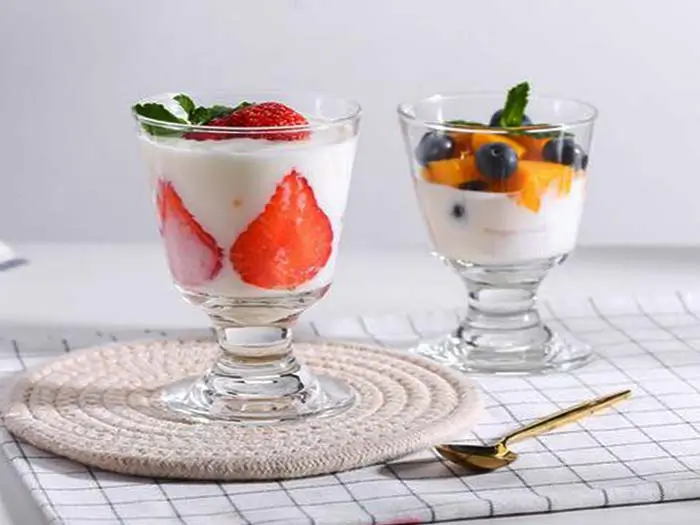
Yogurt cup with a unique design
In premium dessert shops or high-end dining venues, reusable cups can reinforce a luxury and sustainable identity. However, reusable cups require cleaning and storage management, which adds operational costs. Additionally, they may not be as portable or leak-proof as disposable cups, making them less suitable for takeout or retail sales.
The Visual Appeal of Clear Yogurt Parfait Cups
In food packaging, visual presentation plays a crucial role in influencing consumer purchasing decisions. Clear plastic parfait cups allow the vibrant layers of yogurt, fruit, and granola to be fully visible, making the textures and colors more eye-catching. This enhances the visual impact of the product and increases consumer desire to purchase.
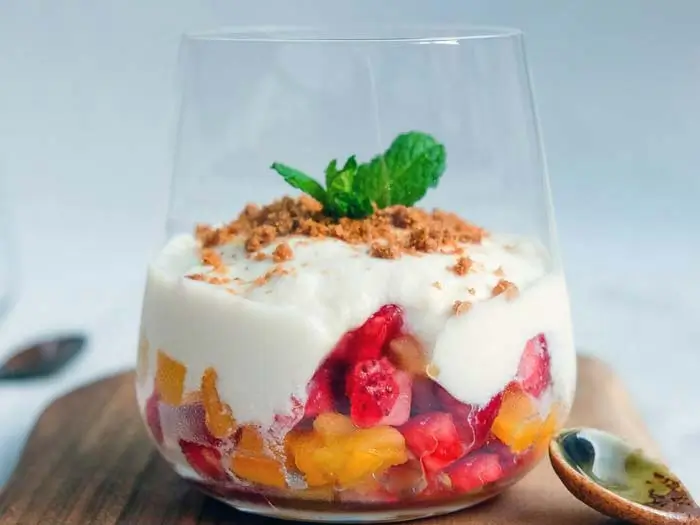
Yogurt looks tempting in a clear glass cup
Additionally, clear cups improve social media shareability. Consumers are more likely to post visually appealing food online, and transparent packaging enhances the presentation, making it perfect for food photography and social sharing. For businesses that prioritize food presentation and brand promotion, clear cups are undoubtedly one of the best choices.
Quick Comparison Table: Choosing the Right Yogurt Parfait Cup
To help you make a quick decision, we’ve created this comparison table highlighting the pros, cons, and best use cases for different yogurt parfait cup types.
| Type | Pros | Cons | Best For |
| Plastic Parfait Cups | High transparency, shatter-resistant, ideal for takeout and food display | Some plastics are non-biodegradable, lower environmental sustainability | Takeout, restaurants, convenience stores |
| Paper Parfait Cups | Eco-friendly, customizable branding options | Non-transparent, weaker water resistance, may soften over time | Sustainable brands, eco-conscious restaurants |
| PLA (Biodegradable) Parfait Cups | Compostable, aligns with sustainability trends | Higher cost, low heat resistance | Eco-friendly restaurants, premium health food brands |
| Parfait Cups with Lids | Leak-proof, portable, great for takeout | Higher cost, additional packaging materials | Takeout shops, supermarket food packaging |
| Open Parfait Cups | Easy to use, improves dining efficiency, reduces packaging waste | Not suitable for takeout or long-term storage, risk of contamination | Dessert shops, cafés, buffets |
| Disposable Parfait Cups | No cleaning required increases efficiency, ideal for takeout | Less environmentally friendly, may contribute to waste | Takeout, convenience stores, parties, large events |
| Reusable Parfait Cups | Eco-friendly, cost-saving in the long run, ideal for premium dining | Requires cleaning and storage, not suitable for takeout | Home use, cafés, upscale restaurants |
| Clear Yogurt Parfait Cups | Enhances visual appeal, increases brand exposure | Requires specific materials, higher cost for some brands | Dessert shops, health food brands, trendy restaurants |
Conclusion
Each type of yogurt parfait cup serves a different purpose. The best choice may depend on your business needs, budget, and sustainability goals. For takeout and retail, disposable clear plastic cups offer portability and strong product presentation. For eco-conscious brands, paper or PLA cups align better with sustainability efforts. And for home or premium dining, reusable glass or Tritan cups are a long-term, high-end choice.
As a professional food packaging supplier, GMZ Ltd. offers a wide range of yogurt parfait cups in different materials, sizes, and customization options to suit various business needs. If you’re looking for high-quality and cost-effective packaging solutions, feel free to contact us for more information!
